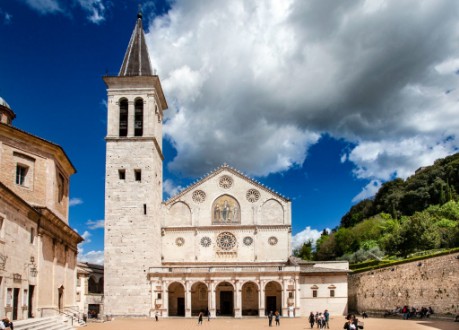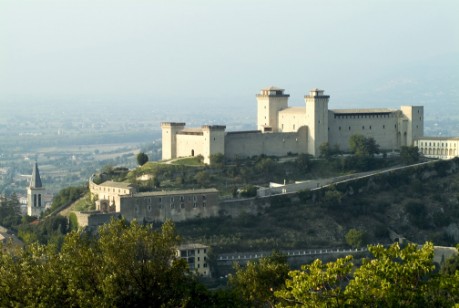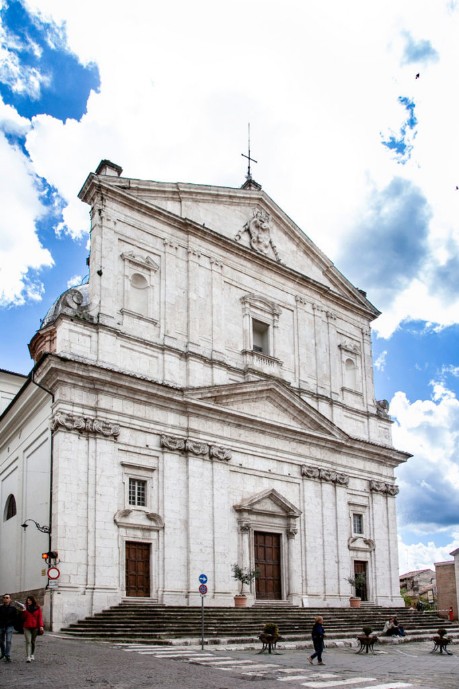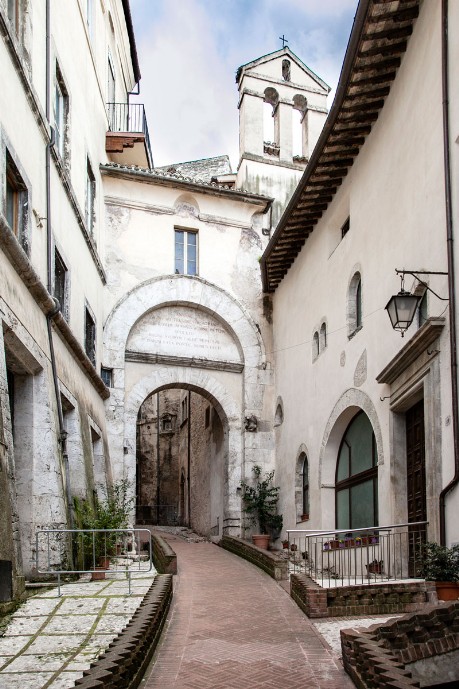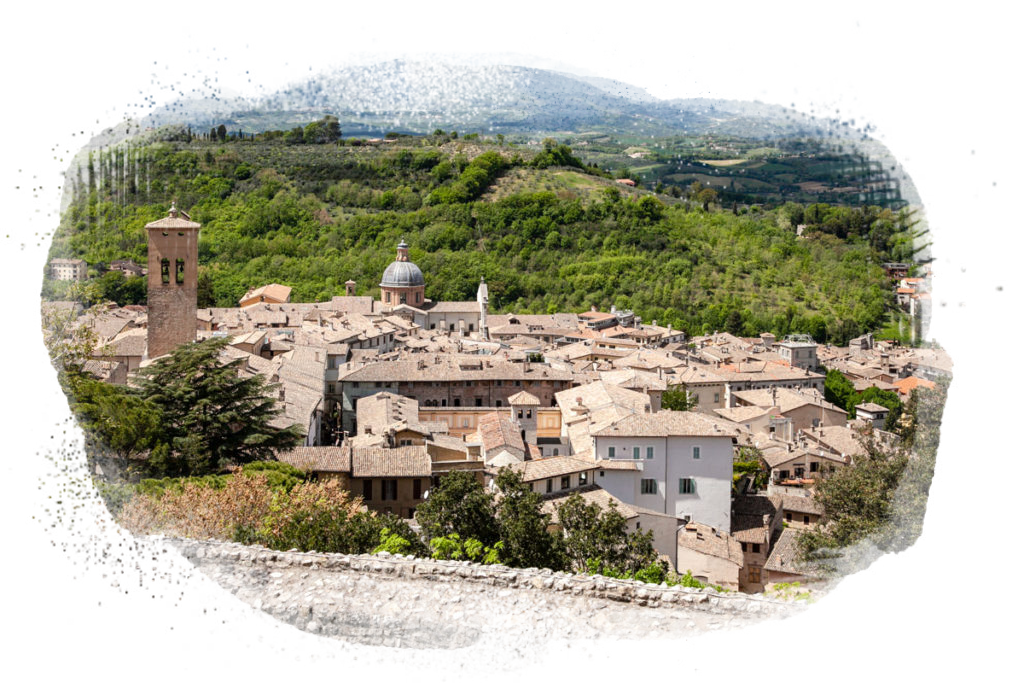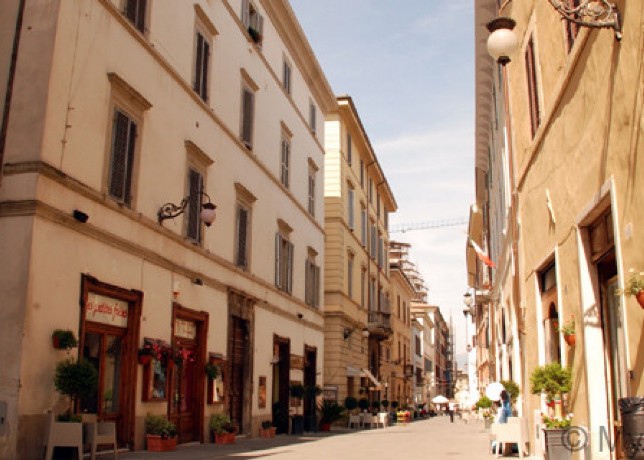The Rocca Albornozianais an imposing fortress that stands on Colle Sant’Elia, strategically towering over the whole Spoleto valley. Its construction started in 1359 and it belongs to a series of fortresses whose construction was ordered by Pope Innocent VIto re-affirm the papal authority in central Italy.
To realize his project, the Pope delegated the influential Spanish cardinal Egidio Albornoz, hence the fortress’ name, who commissioned the direction of the works, which lasted until 1370 ca, to Matteo di Giovannello da Gubbio a.k.a. “il Gattapone”. The Spoletan fortress thus became the cornerstone of the defensive system that controlled the Via Flaminia, from which the military campaigns to recover lost areas of Umbria, Marche and Romagna used to start.
As time went by, the fortress also became the residence of the duchy’s rectors, of the city governors and of the papal legates. It was decorated with frescoes, many of which were lost after 1816, when the Rocca was turned into a jailhouse. Such use would then last until 1982. The huge recovery and restoration works could bring back the Rocca to its original layout, though with unavoidable losses, especially on the pictorial decorations.The castle has a rectangular shape and it’s defended by six imposing towers; inside, it features two wide courtyards, the Cortile delle Armi, originally the headquarters of the troops, and the Cortile d’Onore, reserved to the administrators and the governors, adorned by a beautiful hexagonal well and surrounded by a double portico, where a number of papal coats-of-arms remain.The two courtyards are connected to each other by a barrel vault, decorated at the end of the XVIth century with frescoes representing six cities of the States of the Church. Remarkable spaces surround the Courtyard of Honour, such as Salone d’Onore, the Rocca’s widest space, destined for banquets and ceremonies, and the Camera Pinta, a.k.a “picta”, that keeps two extraordinary cycles of frescoes, of secular genre, that date to the XIVth – XVth centuries, among the most remarkable ones in central Italy. The remembering of the legendary presence of Lucrezia Borgia is still alive; daughter of pope Alexander VI, at the age of 19 her father appointed her rector of the Duchy of Spoleto. In 1499 she stayed three months in Spoleto; the city’s archives keep a file with a few words in Latin written by herself. In 1502, on her way to Ferrara, she would stop once more in this princely dwelling. The central tower on the side of the fortress facing the city is called Tower of the possessed lady, possibly a hint of the cruelty and vengefulness of the castle lady.
Today it is possible to visit various spaces inside the fortress: the Courtyard of Honour, the Courtyard of Arms, the Hall of Honour and the Painted Room (Camera Pinta). Inside the Rocca Albornoziana there is the National Museum of the Duchy, opened in August 2007 after the restoration of the fortress’ inner spaces. It occupies 15 historical halls on two levels, at the ground floor and at the first floor of the Courtyard of Honour. The works are on display following a chronological order and testify to the artistic vitality and the cultural unity of the wide area that has been known for centuries as the Duchy of Spoleto, between the IV and XV centuries AD. Finds dating to the IV-V centuries AD, coming from funerary areas and from cult locations, testify to the growth of the earliest local christian communities and in particular, of monasticism, that was widely spread all over the Spoleto mountain.




